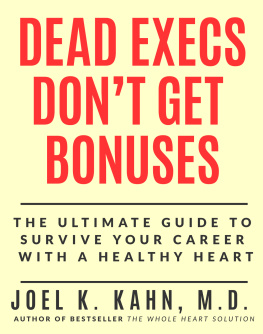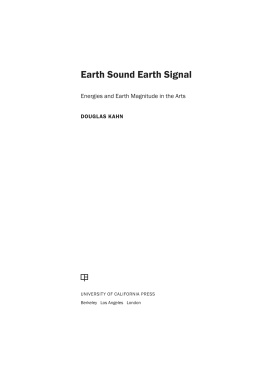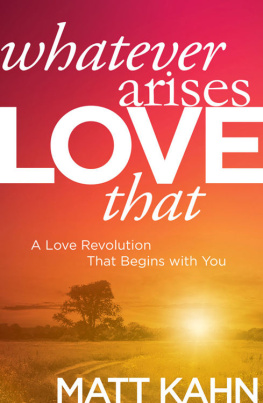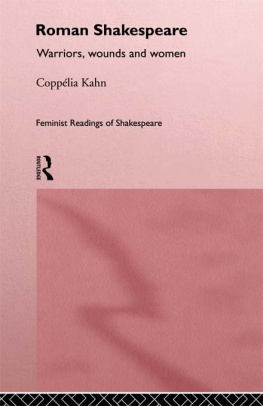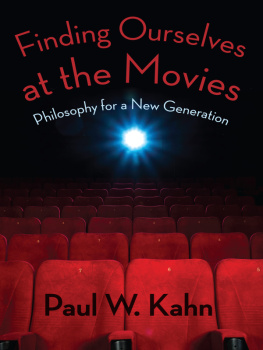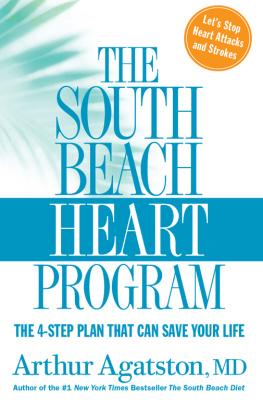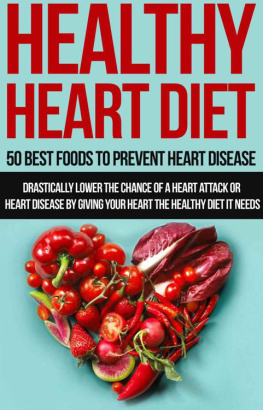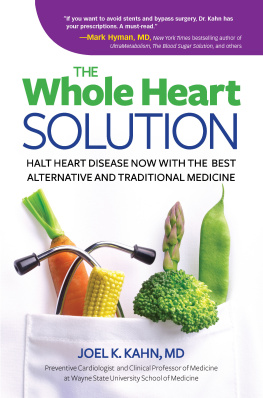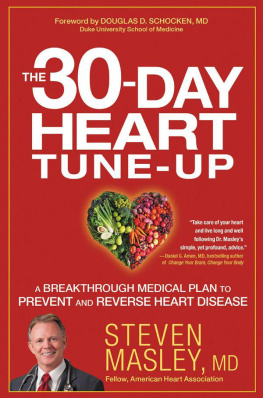
Dead Execs Dont Get Bonuses
The Ultimate Guide To Surviving Your Career With A Healthy Heart
Joel K. Kahn MD, FACC
Clinical Professor of Cardiology, Wayne State University School of Medicine
Faculty, University of South Florida School of Medicine
Readers Digest Advisory Board, Holistic Heart Doc
Member, Society for Heart Attack Prevention and Eradication
Certification, Metabolic Cardiology, University of South Florida School of Medicine
Note to Our Readers
The information in this book should not be substituted for, or used to alter, medical therapy without your doctors advice. For a specific health condition, see your physician for a consultation.
Dead Execs Dont Get Bonuses: The Ultimate Guide To Surviving Your Career With A Healthy Heart
2015, Dr. Joel Kahn
www.DrJoelKahn.com
ALL RIGHTS RESERVED. This book contains materials protected under International and Federal Copyright Laws and Treaties. Any unauthorized reprint of use of this material is prohibited. No part of this book may be reproduced or transmitted in any form or by any means, electronic or mechanical, including photocopying, recording, or by an information storage and retrieval system without express written permission from the author/publisher.

Dedication to Imre Molnar (1951-2012)
This book is dedicated to the memory of Imre Molnar, the Provost of the College for Creative Studies in Detroit, who died tragically of a heart attack in late 2012 while biking on vacation in California with his family. Under his leadership, the program in Detroit had grown to become one of the leading schools for automotive designers and he oversaw the graduation of many leading designers. His death was mourned worldwide for the loss of an extraordinary educator, family man and friend.
Acknowledgments
This book is the result of over a decade of medical training and 25 years of subsequent cardiology practice. Although there have been phenomenal advances in the treatment of heart disease in that time frame, we still have a long way to go. When the news headlines disclose the tragic loss of a highly productive person cut down in their prime by a heart attack the number one killer in Western society I am reminded that I cannot rest. Increasingly, my focus has been to educate as many people as possible on how to identify and reverse heart disease before it creates a tragic situation. I thank Joe Polish for the opportunity to present this topic to the Genius Network at the 25K Club meeting. The feedback was so strong that this book simply had to be written for wider distribution. I would also like to thank Mike Koenigs of Instant Customer for advancing my book writing and publishing skills. Im grateful to all the teachers who helped me reach my current level of understanding of how to identify and prevent heart disease and reverse it if already established. Finally, I thank my wife Karen for always being supportive and understanding the long hours of practice and training that has gone into my formulation of this work.
Introduction: Heart Facts that Matter
Ron clearly did not look like he wanted anything to do with the appointment we had on Monday morning. He was dressed in an Italian suit and fine shoes and told me he was on his way to the airport to visit one of his manufacturing plants in South Carolina. I soon gleaned that he ran a large international corporation making electronic components for the automotive industry. When I asked why he was here, he answered: My earlobes have a crease.
His wife had read an article I had written in Readers Digest magazine as their Holistic Heart Doc columnist, where I described unusual clues to silent heart disease. I will come back to this and other signs of silent heart blockage later in the book; but regarding Ron, his wife had convinced him to get checked when she learned that my office was just a few miles from their home. He had just had a physical with his internist, had won the senior golf tournament at his club and prided himself on maintaining a trim waist as he approached 60. After discussing with him that heart disease can be silent for years before a heart attack or sudden death, and that his need for blood pressure cholesterol medication put him at increased risk, he agreed to further testing.
On his next appointment I reviewed with him imaging data of his heart and arteries which indicated that his arterial age was 10 years beyond his birth age, that he had asymptomatic heart disease and that he had a previously undiagnosed risk of artery damage, lipoprotein(a), which was eight times above normal. I spent time educating him about the importance of increased vegetables, fruits and whole grains and a reduction of processed meats, flours and sugars in his diet, as well as a number of supplements tailored to his individual risk profile (something called personalized lifestyle medicine).
In time, he clearly began to enjoy his visits. He enjoyed seeing the improvements in his advanced laboratory assessments and was relieved that we had found the disease early and that a plan to halt and reverse it was in place. When he asked me to do a webinar for his executives and key managers on heart disease detection and prevention, I was particularly pleased. This was because he was now not only my client but also my spokesperson, and I recently signed many copies of my book for him that he planned to give as holiday presents. To top it all off, the latest measurements of his artery functions have started to return toward normal for his age, something I am especially pleased about.
The statistics about the devastating effects of heart disease are easily accessible on the internet. A small amount of research will reveal that 600,000 people die of heart disease in the United States every year; one out of every four deaths in this country is due to cardiovascular diseases. Heart disease is a leading cause of death for both men and women and causes far more deaths than cancer.
The particular type of heart disease I am focusing on in this book, coronary heart disease or a hardening of the arteries, kills nearly 400,000 people every year. One heart attack occurs roughly every 25 seconds and one person in this country dies as a result of heart disease or stroke around every 39 seconds. Every year, about 785,000 Americans have their first heart attack. The sheer scale of that number is mind-numbing. If one name, like Imre Molnar, can have such a profound personal impact on so many people, then multiply that by 785,000 and imagine all the pain and suffering that must be taking place and must end. I keep thinking of the University of Michigan Big House stadium, my alma mater, with a current capacity of just over 100,000 fans. Imagine filling that immense stadium every day for eight days with more than 100,000 moms, dads, sons, daughters, friends, co-workers... and every one of them suffers a heart attack, many fatal.
For another 470,000 people, a repeat heart attack occurs every year. Thats enough to fill the Big House another fives times over with repeat heart events. Though those 470,000 have been in the Big House before, all of the resources of the medical community failed to prevent a recurrence. Finally, coronary heart disease is costing over $100 billion in the United States alone for health care services, medications and lost productivity.

Next page
